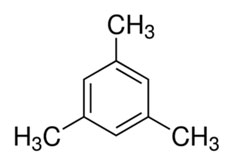
Vapours may cause drowsiness and. Laboratory-grade xylene is composed of m-xylene 4065 p-xylene 20 o-xylene 20 and ethyl benzene 6-20 and traces of toluene trimethyl benzene phenol thiophene pyridine and hydrogen sulfide.

Irreversible or other serious long-lasting adverse health effects or an impaired ability to escape Unit.
Trimethyl benzene health effects. REACH regulation aims to improve the protection of human health and the environment from the risks that can be posed by chemicals. Laboratory-grade xylene is composed of m-xylene 4065 p-xylene 20 o-xylene 20 and ethyl benzene 6-20 and traces of toluene trimethyl benzene phenol thiophene pyridine and hydrogen sulfide. Histopathological technicians who routinely come in contact with xylene-contaminated solvents in the workplace are the population most likely to be exposed to high levels of xylene.
Seek help from the Environmental Health and Safety Department when questions or issues arise relative to chemical waste management. Maintain good housekeeping in chemical waste accumulation areas. Principal Investigators and Department Managers have the responsibility of ensuring that personnel working under their supervision have attended training and are following University protocols.
Human Studies and Case Reports on PG Toxicity. Some people have reported having an allergic reaction to PG. Some people have reported upper respiratory irritation after inhaling aerosolized PG for 1 minute Wieslander et al 2001 but the longer term health effects in humans are not well definedThough some preclinical studies showed inhalation of PG and glycerol can be safe up to 28 days.
Effects in the aquatic environment. Ether oxygenates are significantly more water soluble and less biodegradable than benzene toluene ethyl benzene and xylenes BTEX. Consequently ether oxygenates have the potential to migrate relatively longer distances than BTEX in groundwater.
Health Hazards Inhalation. Slightly irritating to respiratory system. Vapours may cause drowsiness and.
However the effects are not disabling and are transient and reversible upon cessation of exposure Unit. Irreversible or other serious long-lasting adverse health effects or an impaired ability to escape Unit. Life-threatening health effects or death Unit.
Mustard gas or sulfur mustard is a chemical compound belonging to the sulfur-based family of cytotoxic and blister agent chemical warfare agents known as sulfur-mustards or mustard agents. The name mustard gas is widely used but it is technically incorrect. The substance does not actually vaporize into a gas but instead disperses as a fine mist of liquid droplets.
When available the CSI files contain health effects information including the applicable Health Effects Codes for each chemical. The complete list of Health Effects Codes is shown below in Table L-1. The Health Effects Codes indicate the principal health effects of exposure to each substance and are used to determine the seriousness of a violation and severity of the penalty based on the.
25551-13-7 Benzene Trimethyl- 30 -70 Additional Chemical Information Ingredients vary due to multiple blends andor raw material suppliers 4. FIRST AID MEASURES Inhalation. If user experiences breathing difficulty move to air free of vapors Administer oxygen or artificial medical assistance can be rendered.
Amphotericin B is a polyene antifungal antibiotic produced by Streptomyces nodosus with antifungal activity. Amphotericin B binds to ergosterol an essential component of the fungal cell membrane thereby causing depolarization of the membrane and altering cell membrane permeabilityThis leads to leakage of important intracellular components cell rupture and eventually cell death. Methanol also known as methyl alcohol amongst other names is a chemical and the simplest alcohol with the formula C H 3 O H a methyl group linked to a hydroxyl group often abbreviated MeOH.
It is a light volatile colourless flammable liquid with a distinctive alcoholic odour similar to that of ethanol potable alcohol. A polar solvent methanol acquired the name wood alcohol because. On this page you will be able to access individual Acute Exposure Guideline Level AEGLs values that are intended to protect most individuals in the general population including those that might be particularly susceptible to the harmful effects of the chemicals.
Find AEGL values in the table below using the chemical name or its CAS number. Papaefthimiou et al. Demonstrated the effects of water vapor on the catalytic destruction of ethyl acetate and benzene over PtAl 2 O 3 and PtTiO 2 catalysts Papaefthimiou et al 1998b.
They found that the oxidation of benzene is drastically decreased when water was added to the feed streams. Strong adsorption of water on the metal sites is believed to be responsible for the decreased. We would like to show you a description here but the site wont allow us.
26-diisocyanato-1-methyl-benzene 26 toluene diisocyanate. 13-diisocyanatomethyl-benzene mixed isomers of toluene diisocyanate Toluidines their isomers salts and halogenated and sulfonated derivatives except 4-hydroxy-2-nitro-toluidine and hydroxyethyl-2-nitro-p-toluidine. REACH regulation aims to improve the protection of human health and the environment from the risks that can be posed by chemicals.
The revised Drinking Water Directive aims to protect citizens and the environment from the harmful effects of contaminated drinking water and to improve access to drinking water. Any facility that uses benzene as a solvent and claims this exemption must use an aerated biological wastewater treatment system and must use only lined surface impoundments or tanks prior to secondary clarification in the wastewater treatment system. Facilities that choose to measure concentration levels must file a copy of their sampling and analysis plan with the Regional Administrator or.